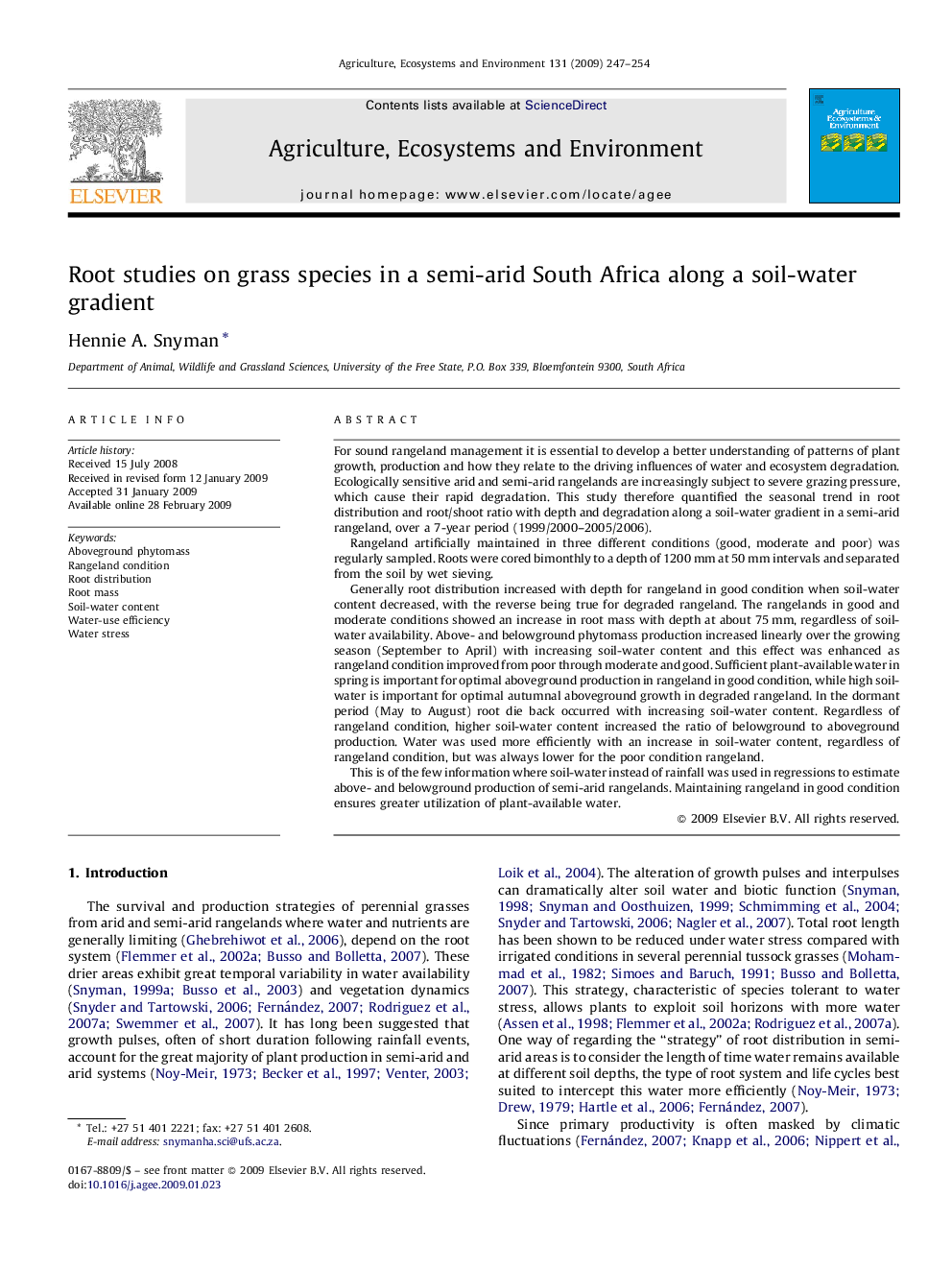| کد مقاله | کد نشریه | سال انتشار | مقاله انگلیسی | نسخه تمام متن |
|---|---|---|---|---|
| 2415237 | 1552126 | 2009 | 8 صفحه PDF | دانلود رایگان |

For sound rangeland management it is essential to develop a better understanding of patterns of plant growth, production and how they relate to the driving influences of water and ecosystem degradation. Ecologically sensitive arid and semi-arid rangelands are increasingly subject to severe grazing pressure, which cause their rapid degradation. This study therefore quantified the seasonal trend in root distribution and root/shoot ratio with depth and degradation along a soil-water gradient in a semi-arid rangeland, over a 7-year period (1999/2000–2005/2006).Rangeland artificially maintained in three different conditions (good, moderate and poor) was regularly sampled. Roots were cored bimonthly to a depth of 1200 mm at 50 mm intervals and separated from the soil by wet sieving.Generally root distribution increased with depth for rangeland in good condition when soil-water content decreased, with the reverse being true for degraded rangeland. The rangelands in good and moderate conditions showed an increase in root mass with depth at about 75 mm, regardless of soil-water availability. Above- and belowground phytomass production increased linearly over the growing season (September to April) with increasing soil-water content and this effect was enhanced as rangeland condition improved from poor through moderate and good. Sufficient plant-available water in spring is important for optimal aboveground production in rangeland in good condition, while high soil-water is important for optimal autumnal aboveground growth in degraded rangeland. In the dormant period (May to August) root die back occurred with increasing soil-water content. Regardless of rangeland condition, higher soil-water content increased the ratio of belowground to aboveground production. Water was used more efficiently with an increase in soil-water content, regardless of rangeland condition, but was always lower for the poor condition rangeland.This is of the few information where soil-water instead of rainfall was used in regressions to estimate above- and belowground production of semi-arid rangelands. Maintaining rangeland in good condition ensures greater utilization of plant-available water.
Journal: Agriculture, Ecosystems & Environment - Volume 131, Issues 3–4, June 2009, Pages 247–254